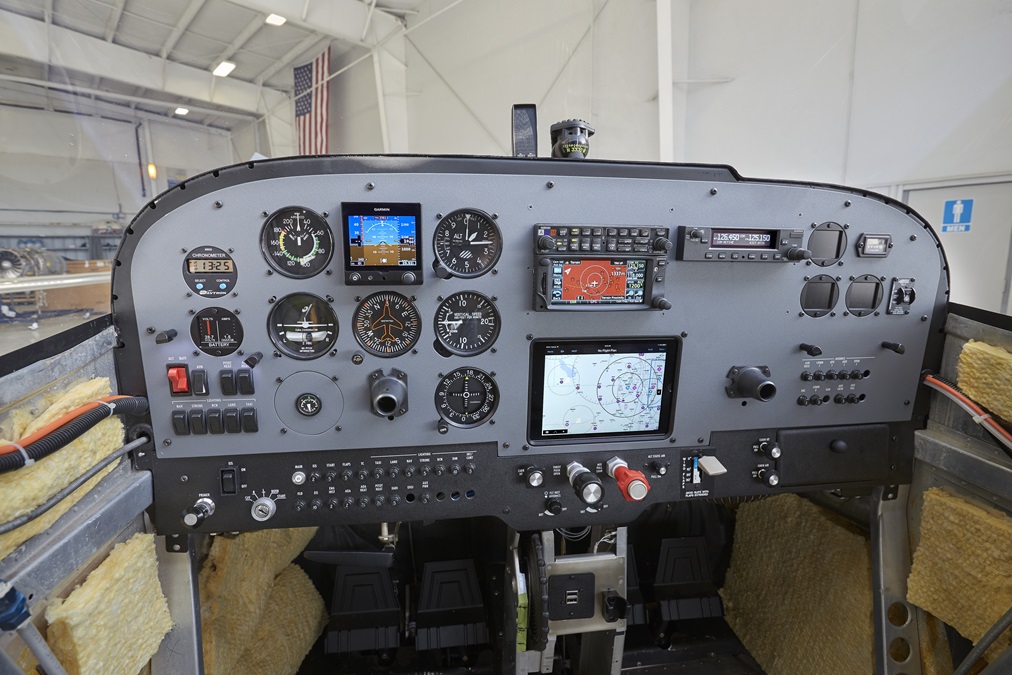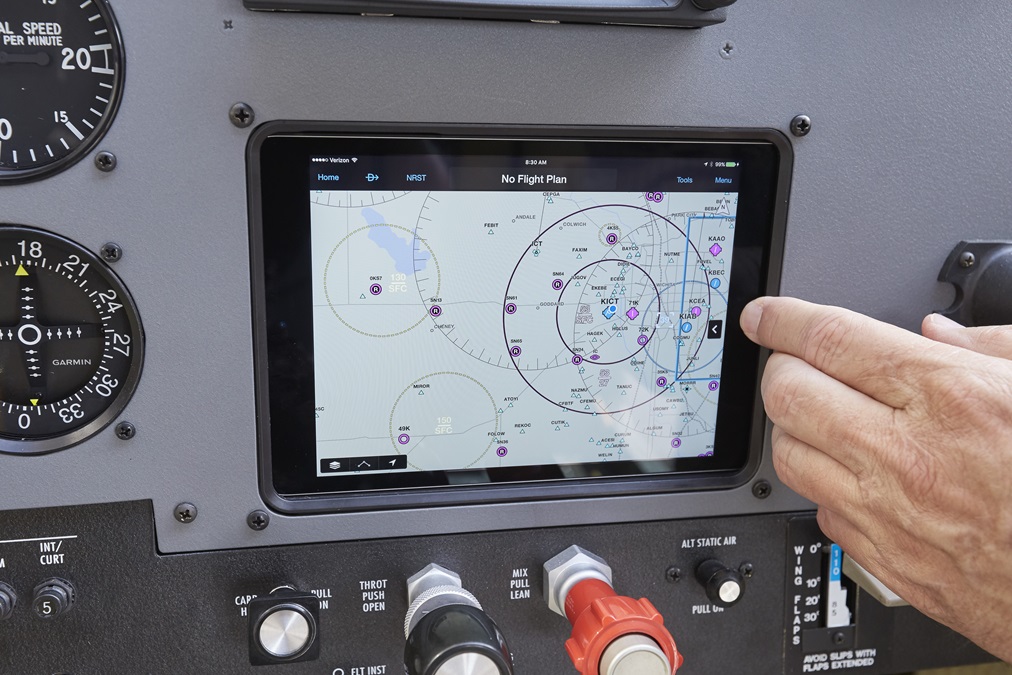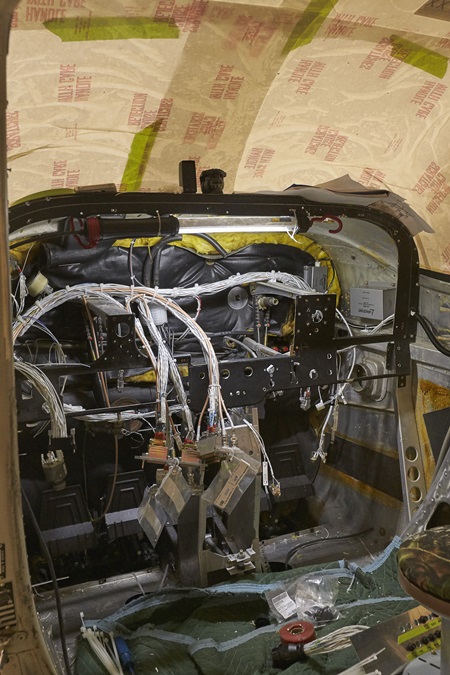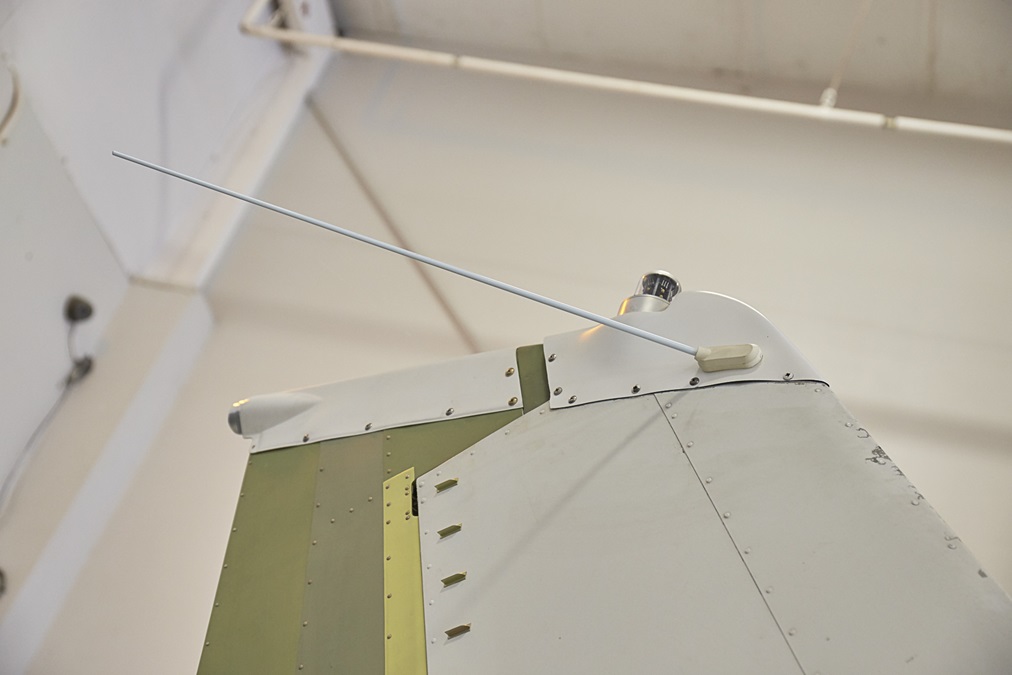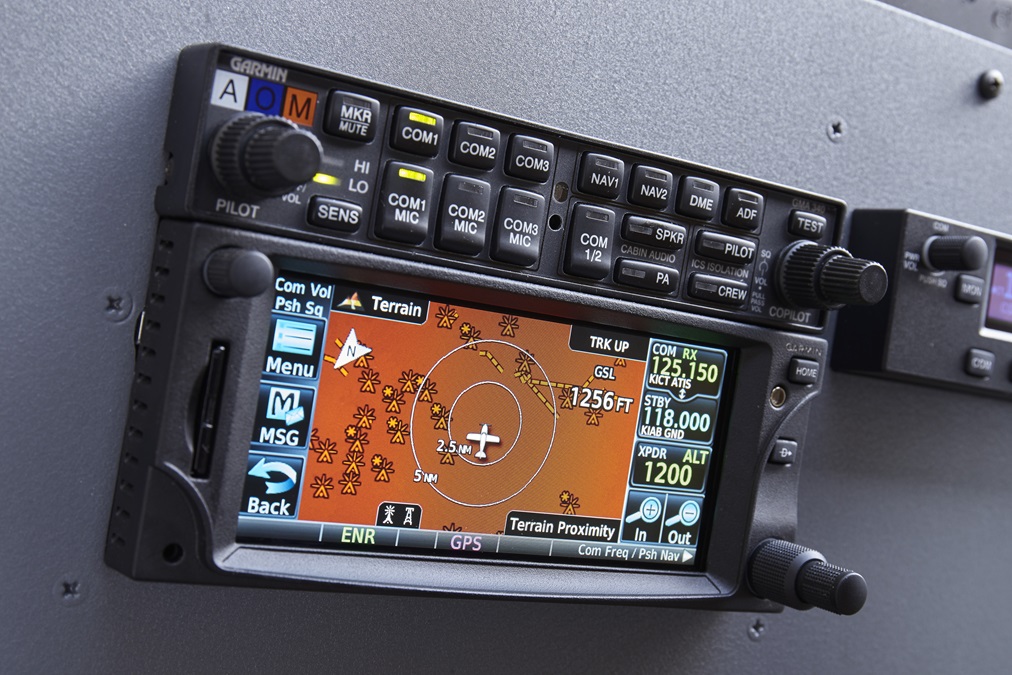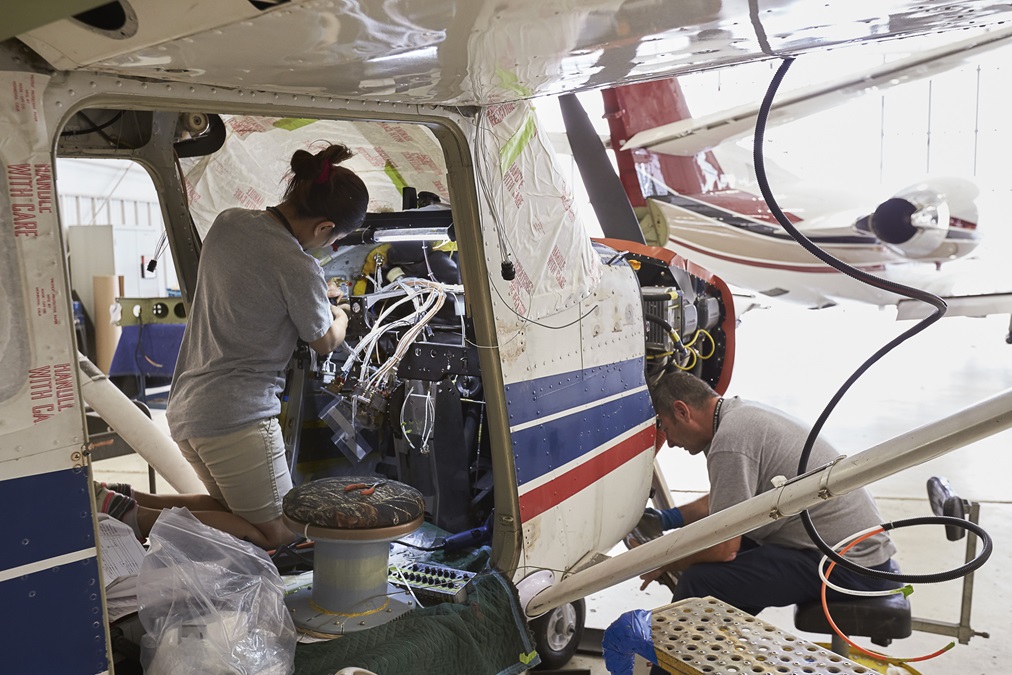Power Panel
Safety innovations stand out in the Sweepstakes 172’s up-front office
That’s been the lament of many pilots who own legacy aircraft: With good maintenance and regular use, the airplanes soldier on—but their antiquated avionics wear out. Replacements aren’t cheap. And the lower-cost, innovative equipment (without technical standard order approval) in the Experimental/homebuilt market hasn’t been an option—until now.
Garmin, the FAA, and AOPA are teaming up to help you install that same lower-cost, innovative equipment in your airplane. AOPA is proving the concept with our own Sweepstakes Cessna 172.
Yingling Aviation has removed N739HW’s original analog gauges and replaced them with new round dials. All but one—look closely at the panel and you’ll see something quite different.
The traditional attitude indicator is gone. In its place is a Garmin G5 electronic flight instrument. The 3.5-inch display is more than an attitude indicator; it displays altitude, airspeed, and vertical speed. That’s all in one compact unit.
If you were to think, Wait a minute—isn’t the G5 for Experimental airplanes? you would be correct. The G5 was introduced early in 2016 for Experimental/homebuilt and Light Sport aircraft. So why is it in the panel of a certified airplane?
On July 24, Garmin announced that it expects FAA approval to install the G5 in type-certificated, fixed-wing general aviation aircraft via a supplemental type certificate with a comprehensive approved model list (AML). The G5’s retail price will be $2,149, including STC, installation kit, and a four-hour back-up battery. TSOed primary flight displays that offer just a bit more functionality can cost more than twice as much.
“The FAA’s Safer Skies initiative identified vacuum system failures as a significant contributor to accidents in instrument meteorological conditions among GA,” said Carl Wolf, Garmin’s vice president of sales and marketing. “This economical installation and upgrade path revolutionizes GA by bringing modern attitude reference to thousands of aircraft that would otherwise depend on older, vacuum-driven equipment.” The Garmin announcement should make all owners of legacy aircraft sit up and take notice.
New aircraft are cost-prohibitive for most pilots, and the existing fleet of more than 200,000 GA aircraft is aging, said Justin Barkowski, AOPA director of government affairs. “The GA community has witnessed the rise of innovative and safety-enhancing equipment in recent years. AOPA appreciates and understands the increased demand from owners and pilots to take advantage of this technology and retrofit their aircraft.” The association is dedicated to removing barriers and making it more affordable for our community to upgrade the existing fleet, he said.
In April 2016, the Experimental Aircraft Association and Dynon Avionics announced FAA approval of an STC process to install the Dynon EFIS-D10A as a replacement primary attitude indicator in Cessna 150, 152, and 172 models, as well as Piper PA–28 and –38 aircraft. EAA said it intends to work with the FAA and other companies to develop similar STCs for their products and expand the AML to include additional type-certificated aircraft.
These developments spell great news for owners. It’s an early step, but a significant one.
AOPA has been working with others in the industry to modernize the existing general aviation fleet by removing certification barriers and reducing upgrade costs. “AOPA has supported and encouraged the FAA’s development of policies that streamlined the incorporation of certain equipment into the existing GA fleet, including angle of attack indicators, attitude indicators, and other nonrequired safety-enhancing equipment,” Barkowski said. The association has sent the FAA a series of recommended guidelines for establishing a comprehensive policy that would cover a wide range of equipment, streamline the processes needed to replace antiquated equipment, and set different standards for technology based on the level of risk posed by that technology. AOPA has also asked the agency to streamline installation approvals by considering not only the risk associated with the new technology, but also the risk associated with continuing to use the equipment that it is intended to replace.
Now that the FAA has displayed its willingness to consider STCs for non-TSOed items, it’s easy to daydream about what lower-cost and innovative safety enhancements might be made available for your older airplane. How about an autopilot? What about an engine monitor or a fuel gauge, or even a primary flight display?
New attitude
Our Sweepstakes 172’s G5 will be approved to replace its 38-year-old attitude indicator, and serve as a secondary source for altitude, airspeed, and vertical speed. The pilot can configure V-speed references, barometric setting, and selected altitude, and get visual alerts when arriving at the selected altitude.
The G5 runs off the electrical system, but a four-hour back-up battery will provide peace of mind in the event of an electrical failure.
AOPA Editor at Large Dave Hirschman likes the G5 so much that he installed two of them in his Experimental Van’s Aircraft RV–3B (see “Solo, or in Tandem,” August 2016 AOPA Pilot). He praised the G5’s brighter, higher resolution screen (320 by 240 pixels), as well as its ease of use, simple installation, and tight integration with other Garmin equipment.
Our Sweepstakes 172’s G5 integrates beautifully with the other avionics, which make for a highly capable package. For starters, the Garmin GTN 650 GPS touchscreen navigator provides high-resolution terrain mapping, graphical flight planning, multiple weather options, connectivity, and traffic display, among other features. Pilots who have flown with other Garmin units should find the learning curve easy. The GPS/nav/com and GTR 225 com radio are paired with a GMA 340 audio panel.
Another safety feature mounted atop the glareshield is a GI 260 angle of attack indicator. The display gives a visual and aural indication of when the airplane is near a stall, as well as guidance for when a pilot is flying the airplane at its optimum angle of attack for maximum performance.
Mount up the iPad
The winner of this sweepstakes airplane won’t have to worry about the FAA-mandated 2020 equipment deadline for Automatic Dependent Surveillance-Broadcast. The panel has a Garmin GTX 345R transponder with ADS-B Out and In capability.
We’ll use the Garmin Pilot app on an iPad Mini to display weather and traffic advisories. The Sweepstakes 172 has its own panel mount for the Mini, provided by Guardian Avionics of Tucson, Arizona (see “iSnug”).
Guardian’s mount holds an iPad securely—no sliding around the cockpit or having to ride on your passenger’s lap. What about sunlight or heat doing its best to shut down the iPad? The mount has a built-in, five-eighths-inch tapered hose/tube port that allows you to attach it to a standard avionics cooling fan. When docked, the iPad is connected to power, data, and audio.
With all of that going on up front, this might just be the best-equipped Cessna 172 you’re likely to encounter. And we’re just getting started. Keep watching for additional developments.
Email [email protected]

